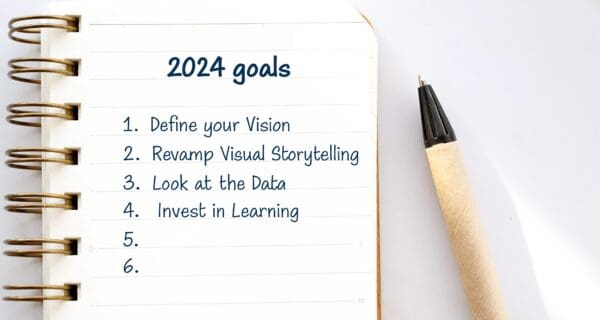With employees working remotely all over the world, meetings of every size are taking place virtually. From Zoom and Microsoft Teams calls among co-workers to client meetings and online conferences, the notion of being face-to-face has evolved. Along with it, comes a whole new way of thinking about leading a meeting. How can you keep your audience engaged when there are extra distractions around? What design elements work best when sharing information on a small screen?
During virtual meetings, presentation materials take center stage. Read the tips below to best meet the needs of your online audience:
- Be present. Whenever possible, have all participants turn on the video feature to create a sense of everyone being in the same room. Making eye contact and being able to see and hear one another aids in engagement and collaboration and makes for a more productive meeting.
- Drive engagement. Long presentations should be avoided to keep participants’ attention. Send out a pre-read to help with preparation and include as much interaction during the meeting as possible to keep everyone involved. Incorporate pulse checks in regular intervals to encourage feedback, questions and discussion.
- Keep it simple. Minimize the number of words on each slide and use larger font sizes than you normally would, knowing your presentation will be viewed on laptops, tablets and even mobile phones. Avoid complex transitions and too many audio or video clips that may lead to choppy audio or a frozen feed, especially for attendees who don’t have a strong Internet connection.
- Tell a visual story. As the presenter, it’s your responsibility to grab and hold your audience’s attention. One of the most effective ways to do this is to include high-quality visuals throughout the presentation. By doing so, you can share a lot of information to complement, rather than distract from, the discussion.
Need help creating an impactful and effective presentation? Connect with us to learn how we can support your next virtual meeting.











